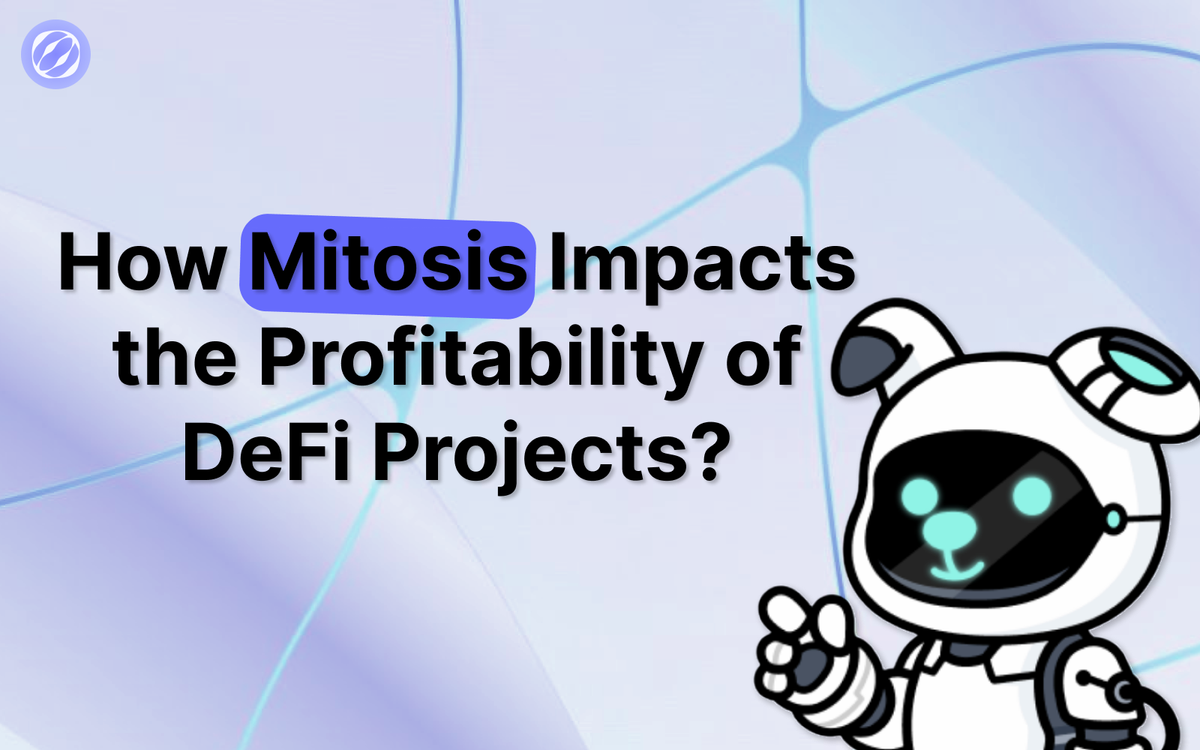Decentralizing Liquidity: How Mitosis Impacts the Profitability of DeFi Projects

Introduction
In the world of decentralized finance (DeFi), liquidity is a key factor in the success of any project. It determines how quickly and efficiently users can execute transactions without significantly impacting asset prices. However, centralized liquidity solutions have numerous limitations, including trust risks and capital concentration. Mitosis offers an innovative approach to liquidity decentralization that not only enhances security and efficiency but also impacts the profitability of DeFi projects.
Liquidity Issues in DeFi

1. Liquidity Fragmentation
In today’s DeFi landscape, liquidity is often distributed across different blockchain ecosystems, creating challenges for both users and developers. The lack of effective liquidity aggregation mechanisms leads to inefficient capital utilization. Many users are forced to navigate multiple protocols and workarounds, increasing costs and reducing accessibility to financial services.
Additionally, fragmented liquidity results in wider bid-ask spreads, making trading less profitable. Investors attempting to take advantage of arbitrage opportunities across various platforms often face difficulties in moving assets, particularly due to high transaction fees and delays.
2. High Costs of Maintaining Liquidity
Many projects are forced to implement incentive programs (yield farming) or create liquidity pools, which require significant expenditures on rewards for liquidity providers (LPs). This can lead to an unsustainable economic model and high token inflation pressure. Some projects encounter the issue of "fleeting liquidity," where liquidity rapidly decreases after the incentive period ends.
Moreover, the constant need for high LP rewards creates risks for the sustainable development of DeFi projects. As rewards decrease, liquidity may quickly exit the platform, leading to market activity fluctuations and increased volatility.
3. Liquidity Centralization
Despite the decentralized nature of DeFi, liquidity is often controlled by a small number of major players or concentrated on specific platforms. This creates risks of market manipulation and reduces the efficiency of the DeFi ecosystem. Additionally, liquidity centralization makes the system vulnerable to attacks and external regulatory restrictions.
If liquidity is controlled by a limited number of providers, they can impose unfavorable conditions on traders, such as higher fees or restricted access to certain assets. Furthermore, liquidity centralization increases the risk of regulatory pressure, as large liquidity pools can fall under the control of governmental authorities.
How Mitosis Solves These Problems

Mitosis offers a solution that eliminates these drawbacks through decentralized liquidity management. Key aspects include:
1. Dynamic Liquidity Redistribution
Mitosis employs mechanisms that enable efficient liquidity redistribution across different DeFi ecosystems, ensuring flexibility and optimal capital utilization. This means liquidity is not locked in one place but can be used where it is needed most.
This approach allows users to avoid unnecessary transaction costs and increase order execution speed. In the long term, it fosters trust in DeFi projects as users experience a more predictable and efficient platform.
2. Reducing the Cost of Attracting Liquidity
Through automated liquidity management mechanisms, Mitosis reduces the need for direct LP incentives, thereby lowering inflationary pressure and making DeFi projects more economically viable. Instead of mass token payouts, liquidity becomes naturally available through efficient capital use.
As a result, DeFi projects can reallocate funds previously spent on attracting liquidity toward developing new features, marketing, and enhancing the user experience.
3. Decentralized Governance
Unlike centralized pools, Mitosis ensures distributed liquidity management through smart contract mechanisms, increasing security and reducing the risk of manipulation. Each ecosystem participant gains access to transparent information about liquidity conditions, making the process more equitable.
Decentralized governance also contributes to ecosystem stability and longevity, as the absence of centralized control prevents sudden market manipulations.
Impact on the Profitability of DeFi Projects

1. Increased Capital Efficiency
Optimized liquidity usage reduces the need for additional capital inflows, making DeFi projects more profitable for participants.
2. Lower Volatility and Risks
Stable liquidity helps mitigate market fluctuations, making DeFi platforms more attractive to traders and investors.
3. Reduced Liquidity Acquisition Costs
Lower expenses on LP incentive programs allow projects to focus on long-term development strategies.
4. Opening New Markets
Mitosis enables DeFi projects to integrate into multi-chain ecosystems, unlocking new opportunities for investors and users.
Conclusion
Mitosis is ushering in a new era of efficient liquidity management, enabling DeFi projects to reduce costs, increase profitability, and enhance the user experience. Its solutions help eliminate centralization risks and make the DeFi ecosystem more resilient to market changes.
In this article I used the artwork made by: ForsytheXBT, kimmoonsoon and Elearachel
My Twitter account is https://x.com/Glodin9



Comments ()